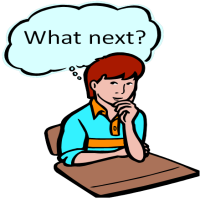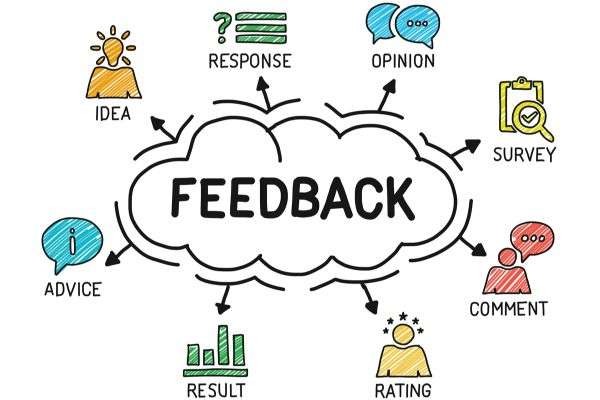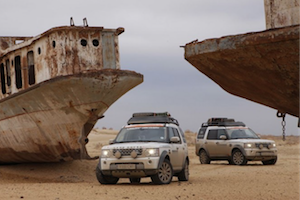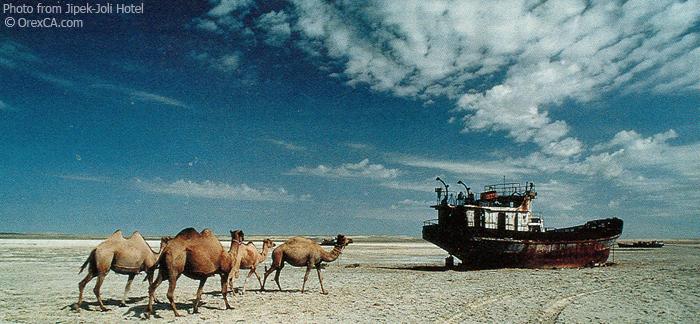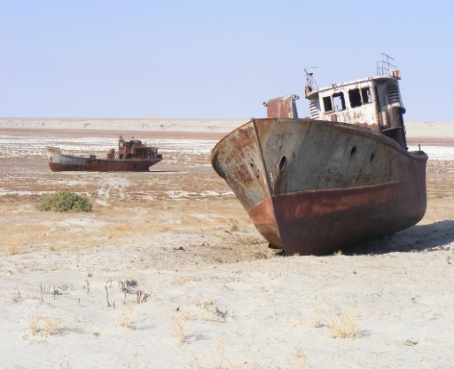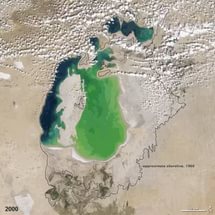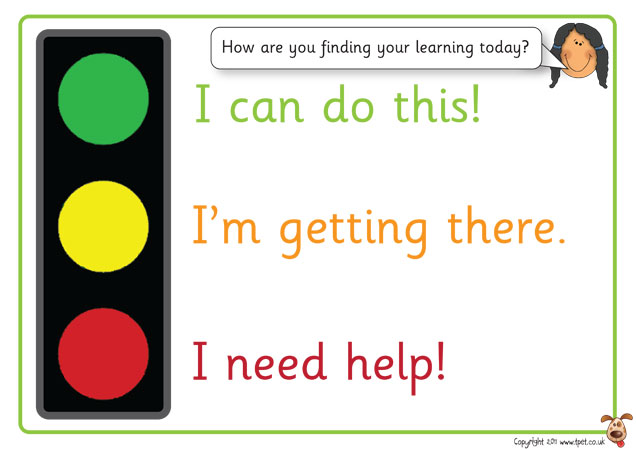
М.ТЫНЫШПАЕВ АТЫНДАҒЫ ҚАЗАҚ КӨЛІК ЖӘНЕ КОММУНИКАЦИЯЛАР АКАДЕМИЯСЫ
ШЫМКЕНТ КӨЛІК КОЛЛЕДЖІ
2022-2023 оқу жылы
Сабақ жоспары №4
|
Модуль/пән атауы |
«ЖБП 06 Шет тілі». |
||||||||||||
|
Сабақтың тақырыбы |
Causes and consequences of natural disasters (atmosphere, lithosphere, hydrosphere |
||||||||||||
|
Педагог |
Сапарбекова Фарида |
||||||||||||
|
Курс |
1курс |
||||||||||||
|
Топ |
|
|
|
|
|
|
|
|
|||||
|
Сабақтың өткізілетін күні |
|
|
|
|
|
|
|
|
|||||
|
Сабақтың түрі |
Тәжірибелік |
||||||||||||
|
Сабақтың мақсаты немесе оқыту нәтижелері |
All learners will be able to understand general information by listening the text. Most learners will be able to pronounce increasing range of words and simple sentences about the theme. Some learners will be able to present their ideas clearly to others, using the new vocabulary. |
||||||||||||
|
Бағалау критерийлері |
- Convey fantasy ideas including emotions and senses. - Provide unexpected speech to answer a variety of questions at sentence level with limited flexibility. - Identify particular information and details while listening. |
||||||||||||
|
Оқу - әдістемелік құралдар, әдебиеттер |
Action for Kazakhstan Jenny Dooley,BobObee10gradestudentsbookExpressPublishing |
||||||||||||
|
Техникалық құралдар, материалдар |
Using videos& pictures, working with URLs |
||||||||||||
|
Сабақ кезеңдері |
Сабақ барысы |
||||||||||||
|
1.Ұйымдастыру кезеңі: (5минут) |
About entertainment. Use the method of “Association” 1st group write about the advantages of watching TV. 2nd group write about the disadvantages of watching TV.
|
||||||||||||
|
2. Үй- жұмысын сұрау (20минут) |
Checking home work. Exercise 5b p-10 Answer the questions Learn by heart the vocabulary |
||||||||||||
|
3. Жаңа материалды түсіндіруге дайындық кезеңі (жаңа тақырыпты болжау) / Практикалық, зертханалық жұмысқа дайындық кезеңі (5минут) |
I. Organization moment. Teacher greets with the pupils and check their attendance. II. Divided pupils into two groups by picture puzzles. 1st group “Natural disasters” 2nd group “Man-made disasters” |
||||||||||||
|
4. Жаңа материалды түсіндіру кезеңі (Практикалық, зертханалық жұмысты орындау кезеңі) (30минут) |
Explain the new theme: To show them video. Natural disasters like earthquakes, tornado, tsunami and floods happen more frequently nowadays. There are many reasons why they occur, but the main one is related to human activity on Earth which often has a negative impact on our environment. All kinds of disasters are usually very damaging. Many dwellings, roads and even whole streets and cities are ruined. The number of victims usually terrifies as hundreds or even thousands of people get injured or die in disasters. However, each disaster has a different nature. For example, an earthquake is the result of the tectonic plates’ movement which leads to the shaking of a certain area on land. Earthquakes destroy buildings and people usually become victims because they get stuck or killed under the rubble. Tornado is also a natural disaster which looks like an enormous column of the wind which lifts cars, bicycles, furniture and many other things. It is also called a twister and it can be very dangerous if touches the surface of the ground or water. Flood in its turn happens when rivers burst their banks. Most extended floods damage cities and wash away whole populated places. Tsunami is another natural disaster which arises as a series of huge waves caused by underwater earthquakes. Thus, there are many natural disasters which are dangerous for all of us. We should be careful and treat our planet better in order not to die with it. V. Task:1 Use method “Bag vocabulary”
Causes of Natural Disasters The
main causes of natural disasters are tectonic shifts, lunar
activities, deforestation, soil erosion, air pressure, ocean
currents, pollution, global warming, mining, seismic waves,
etc.
What is Predicting Natural Disasters? Natural disasters like hurricanes, earthquakes, and flooding cannot be stopped. However, there are still ways to reduce the damage caused by natural disasters. Prediction and warning systems, education, preparation, and public awareness can minimise the consequences of a natural disaster on communities. Property and natural resources can be secured when a warning of an approaching disaster can be given well in advance, as it can for some riverine floods, wildfires, and hurricanes. |
||||||||||||
|
5. Жаңа материалды бекіту кезеңі. (Практикалық, зертханалық жұмысты тапсыру кезеңі) (20минут) |
Task:1 Read the words in the box. Some of the disasters are man-made and some are natural. Classify them using the table. 1st group “Natural disasters” 2nd group “Man-made disasters”
Descriptor: pupils
Put the words in the right column Task:2 Look at the picture and match them to their definitions. Method “Card sorts”
1
3 2 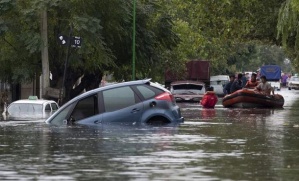 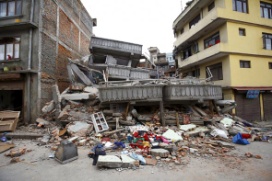 
4 5 6 7 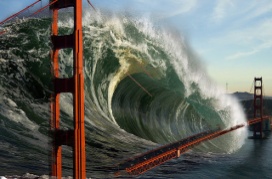 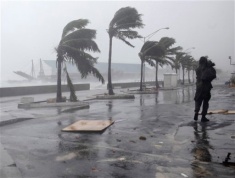 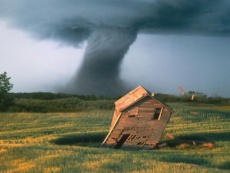 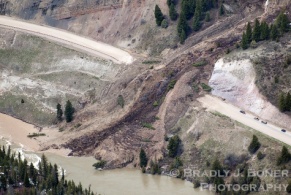
a) a sudden, violent shaking of the earth’s surface. b) a large amount of water covering an area that is usually dry. c) a mass of earth ,rock, etc. that falls down the slope of a mountain or a cliff. d) a violent storm with very strong winds which move circle. e) a long period of time when there is little or no rain. f) an extremely large wave in the sea caused, for example, by an earthquake. g) a violent storm with very strong winds, especially in the western Atlantic Ocean. Keys: 1-b,2-a,3-e,4-f,5-g,6-d,7-c Descriptor: Students Match definitions with their pictures correctly. |
||||||||||||
|
6.Үй тапсырмасы туралы ақпараттандыру кезеңі (5 минут) |
Home task: Ask for this questions below.
|
||||||||||||
|
7.Сабақты қорытындылау және рефлексия (5 минут) |
I. Cinquain Method (rhyming words) 1. Noun: Disaster 2. Adjectives: terrible, dangerous 3. Verb: destroy, survive, affect 4. Phrase: Save Mother Earth! 5. Synonym: Catastrophic Descriptor: Pupils
II. “Twitter Board” technology -What types of natural disasters are common in our area? -What can we do to prepare for natural disasters? III. Giving homework: Find information about a disaster that happened in our country. IV. Reflection: “FEEDBACK”
(Students shares their opinions about the lesson)
|
||||||||||||
|
Differentiation – how do you plan to give more support? How do you plan to challenge the more able learners? |
Assessment – how are you planning to check learners’ learning?
|
Health and safety check ICT links
|
|
Provide assistance to students who make mistakes when solving problems through individual consultation. Capable students can additionally ask questions and tasks for a deep understanding of the topic. |
Descriptor: Pupils - listen the text - identify true or false statements. Pupils - read the words - put the words in the right columns. Pupils - match definitions with their pictures correctly. Pupils -rhyme the words correctly. |
Make sure learners have sufficient space to conduct a class survey. Points from Safety rules were used at this lesson |
|
Reflection Were the lesson objectives/learning objectives realistic? |
1. The lesson objectives are realistic for the children 7th form 2. All the children achieve the learning objectives. 3. They do a lot of exercises. They present their ideas about the new theme. They widen their vocabulary. The lesson is very interesting because it is a modal lesson. I stick to timings |
|
М.ТЫНЫШПАЕВ АТЫНДАҒЫ ҚАЗАҚ
КӨЛІК ЖӘНЕ КОММУНИКАЦИЯЛАР АКАДЕМИЯСЫ
ШЫМКЕНТ КӨЛІК КОЛЛЕДЖІ
2023-2024 оқу жылы
Сабақ жоспары №4
|
Модуль/пән атауы |
«ЖБП 06 Шет тілі». |
||||||||||||
|
Сабақтың тақырыбы |
Causes and consequences of natural disasters (atmosphere, lithosphere, hydrosphere |
||||||||||||
|
Педагог |
Сапарбекова Фарида |
||||||||||||
|
Курс |
1курс |
||||||||||||
|
Топ |
|
|
|
|
|
|
|
|
|||||
|
Сабақтың өткізілетін күні |
|
|
|
|
|
|
|
|
|||||
|
Сабақтың түрі |
Тәжірибелік |
||||||||||||
|
Сабақтың мақсаты немесе оқыту нәтижелері |
All learners will be able to understand general information by listening the text. Most learners will be able to pronounce increasing range of words and simple sentences about the theme. Some learners will be able to present their ideas clearly to others, using the new vocabulary. |
||||||||||||
|
Бағалау критерийлері |
- Convey fantasy ideas including emotions and senses. - Provide unexpected speech to answer a variety of questions at sentence level with limited flexibility. - Identify particular information and details while listening. |
||||||||||||
|
Оқу - әдістемелік құралдар, әдебиеттер |
Action for Kazakhstan Jenny Dooley,BobObee10gradestudentsbookExpressPublishing |
||||||||||||
|
Техникалық құралдар, материалдар |
Using videos& pictures, working with URLs |
||||||||||||
|
Сабақ кезеңдері |
Сабақ барысы |
||||||||||||
|
1.Ұйымдастыру кезеңі: (5минут) |
About entertainment. Use the method of “Association” 1st group write about the advantages of watching TV. 2nd group write about the disadvantages of watching TV.
|
||||||||||||
|
2. Үй- жұмысын сұрау (20минут) |
Checking home work. Exercise 5b p-10 Answer the questions Learn by heart the vocabulary |
||||||||||||
|
3. Жаңа материалды түсіндіруге дайындық кезеңі (жаңа тақырыпты болжау) / Практикалық, зертханалық жұмысқа дайындық кезеңі (5минут) |
I. Organization moment. Teacher greets with the pupils and check their attendance. II. Divided pupils into two groups by picture puzzles. 1st group “Natural disasters” 2nd group “Man-made disasters” |
||||||||||||
|
4. Жаңа материалды түсіндіру кезеңі (Практикалық, зертханалық жұмысты орындау кезеңі) (30минут) |
Explain the new theme: To show them video. Natural disasters like earthquakes, tornado, tsunami and floods happen more frequently nowadays. There are many reasons why they occur, but the main one is related to human activity on Earth which often has a negative impact on our environment. All kinds of disasters are usually very damaging. Many dwellings, roads and even whole streets and cities are ruined. The number of victims usually terrifies as hundreds or even thousands of people get injured or die in disasters. However, each disaster has a different nature. For example, an earthquake is the result of the tectonic plates’ movement which leads to the shaking of a certain area on land. Earthquakes destroy buildings and people usually become victims because they get stuck or killed under the rubble. Tornado is also a natural disaster which looks like an enormous column of the wind which lifts cars, bicycles, furniture and many other things. It is also called a twister and it can be very dangerous if touches the surface of the ground or water. Flood in its turn happens when rivers burst their banks. Most extended floods damage cities and wash away whole populated places. Tsunami is another natural disaster which arises as a series of huge waves caused by underwater earthquakes. Thus, there are many natural disasters which are dangerous for all of us. We should be careful and treat our planet better in order not to die with it. V. Task:1 Use method “Bag vocabulary”
Causes of Natural Disasters The
main causes of natural disasters are tectonic shifts, lunar
activities, deforestation, soil erosion, air pressure, ocean
currents, pollution, global warming, mining, seismic waves,
etc.
What is Predicting Natural Disasters? Natural disasters like hurricanes, earthquakes, and flooding cannot be stopped. However, there are still ways to reduce the damage caused by natural disasters. Prediction and warning systems, education, preparation, and public awareness can minimise the consequences of a natural disaster on communities. Property and natural resources can be secured when a warning of an approaching disaster can be given well in advance, as it can for some riverine floods, wildfires, and hurricanes. |
||||||||||||
|
5. Жаңа материалды бекіту кезеңі. (Практикалық, зертханалық жұмысты тапсыру кезеңі) (20минут) |
Task:1 Read the words in the box. Some of the disasters are man-made and some are natural. Classify them using the table. 1st group “Natural disasters” 2nd group “Man-made disasters”
Descriptor: pupils
Put the words in the right column Task:2 Look at the picture and match them to their definitions. Method “Card sorts”
1
3 2   
4 5 6 7    
a) a sudden, violent shaking of the earth’s surface. b) a large amount of water covering an area that is usually dry. c) a mass of earth ,rock, etc. that falls down the slope of a mountain or a cliff. d) a violent storm with very strong winds which move circle. e) a long period of time when there is little or no rain. f) an extremely large wave in the sea caused, for example, by an earthquake. g) a violent storm with very strong winds, especially in the western Atlantic Ocean. Keys: 1-b,2-a,3-e,4-f,5-g,6-d,7-c Descriptor: Students Match definitions with their pictures correctly. |
||||||||||||
|
6.Үй тапсырмасы туралы ақпараттандыру кезеңі (5 минут) |
Home task: Ask for this questions below.
|
||||||||||||
|
7.Сабақты қорытындылау және рефлексия (5 минут) |
I. Cinquain Method (rhyming words) 1. Noun: Disaster 2. Adjectives: terrible, dangerous 3. Verb: destroy, survive, affect 4. Phrase: Save Mother Earth! 5. Synonym: Catastrophic Descriptor: Pupils
II. “Twitter Board” technology -What types of natural disasters are common in our area? -What can we do to prepare for natural disasters? III. Giving homework: Find information about a disaster that happened in our country. IV. Reflection: “FEEDBACK”
(Students shares their opinions about the lesson)
|
||||||||||||
|
Differentiation – how do you plan to give more support? How do you plan to challenge the more able learners? |
Assessment – how are you planning to check learners’ learning?
|
Health and safety check ICT links
|
|
Provide assistance to students who make mistakes when solving problems through individual consultation. Capable students can additionally ask questions and tasks for a deep understanding of the topic. |
Descriptor: Pupils - listen the text - identify true or false statements. Pupils - read the words - put the words in the right columns. Pupils - match definitions with their pictures correctly. Pupils -rhyme the words correctly. |
Make sure learners have sufficient space to conduct a class survey. Points from Safety rules were used at this lesson |
|
Reflection Were the lesson objectives/learning objectives realistic? |
1. The lesson objectives are realistic for the children 7th form 2. All the children achieve the learning objectives. 3. They do a lot of exercises. They present their ideas about the new theme. They widen their vocabulary. The lesson is very interesting because it is a modal lesson. I stick to timings |
|
Педагог: _______ Ф.Сапарбекова
М.ТЫНЫШПАЕВ АТЫНДАҒЫ ҚАЗАҚ КӨЛІК ЖӘНЕ КОММУНИКАЦИЯЛАР АКАДЕМИЯСЫ
ШЫМКЕНТ КӨЛІК КОЛЛЕДЖІ
2023-2024 оқу жылы
Сабақ жоспары №5
|
Модуль/пән атауы |
«ЖБП 06 Шет тілі». |
|||||||||||
|
Сабақтың тақырыбы |
Focus on Kazakhstan: reporting on the causes and consequences of natural disasters |
|||||||||||
|
Педагог |
Сапарбекова Фарида |
|||||||||||
|
Курс |
1курс |
|||||||||||
|
Топ |
|
|
|
|
|
|
|
|||||
|
Сабақтың өткізілетін күні |
|
|
|
|
|
|
|
|||||
|
Сабақтың түрі |
Тәжірибелік |
|||||||||||
|
Сабақтың мақсаты немесе оқыту нәтижелері |
All learners will be able to understand general information by listening the text. Most learners will be able to pronounce increasing range of words and simple sentences about the theme. Some learners will be able to present their ideas clearly to others, using the new vocabulary. |
|||||||||||
|
Бағалау критерийлері |
- Convey fantasy ideas including emotions and senses. - Provide unexpected speech to answer a variety of questions at sentence level with limited flexibility. - Identify particular information and details while listening. |
|||||||||||
|
Оқу - әдістемелік құралдар, әдебиеттер |
Action for Kazakhstan Jenny Dooley,BobObee10gradestudentsbookExpressPublishing |
|||||||||||
|
Техникалық құралдар, материалдар |
Using videos& pictures, working with URLs |
|||||||||||
|
Сабақ кезеңдері |
Сабақ барысы |
|||||||||||
|
1.Ұйымдастыру кезеңі: (5минут) |
About entertainment. Use the method of “Association” 1st group write about the advantages of watching TV. 2nd group write about the disadvantages of watching TV.
|
|||||||||||
|
2. Үй- жұмысын сұрау (20минут) |
Checking home work. Exercise 2 Retell the text Vocabulary learn by heart. |
|||||||||||
|
3. Жаңа материалды түсіндіруге дайындық кезеңі (жаңа тақырыпты болжау) / Практикалық, зертханалық жұмысқа дайындық кезеңі (5минут) |
I. Organization moment. Teacher greets with the pupils and check their attendance. II. Divided pupils into two groups by picture puzzles. 1st group “The Globe” 2nd group “Environment” |
|||||||||||
|
4. Жаңа материалды түсіндіру кезеңі (Практикалық, зертханалық жұмысты орындау кезеңі) (30минут) |
Explain the new theme: To show them video. Students watch the video and guess the theme.
(pupils share their ideas) Active vocabulary to show them pictures of natural disasters. Flood [flʌd] – су тасқыны Earthquake [ә:θkweik] – жер сілкінісі Tsunami [su:nәmi] - цунами Tornado [tᴐ:neidәu] - торнадо Volcano[vᴐlkᴂnәu] - жанартау Lightning [laitniƞ] - найзағай Hurricane [h˄rikәn] - дауыл Drought [draut] - құрғақшылық Landslide [lᴂnd slaid] - көшкін Affect [ᴂfekt]- әсер ету Whirlwind[wɜ:lwind] - құйын Evaporate [i’ vᴂpәreit] – буға айналу Track [trᴂk]- бақылау V. Task:1 Use method “Bag vocabulary”
Listening. Listen to the information about one of the natural disasters Hurricanes and indentify if the information True or False? Natural disasters. Scientists understand a lot about the environment – but they don’t understand everything! Every year there are big and small disasters in different parts of the world. Some of this happen very often, but some of them are a big shock. How do these natural disasters affect humans? Can we do anything about them? Hurricanes. What are they? Tropical storms with strong winds. They start at sea and can travel a long distance. They have different names in different places: “hurricanes” in the Atlantic Ocean, “typhoons” in the Pacific ocean, “tropical cyclones” in the Indian ocean and around Australasia. Tornadoes, or whirlwinds, are similar, but begin over land. Why do they happen? The water evaporates from the warm sea. This condenses in the atmosphere. More and more hot, wet air rises up. It becomes a strong wind. Where do they happen? Over the warm parts of oceans. Tornadoes are common in parts of the USA, Australia and Japan. How do they affect people? They can affect ships, blow down houses, cause floods and disrupt traffic. What can people do? Scientists can usually track hurricanes, but they cannot stop them. True or false? 1. Scientists know everything about the environment. 2. Great and small disasters take place each year in different parts of the world. 3. Hurricanes can be of various names in different places. 4. Hurricanes can common in all parts of the world. 5. It is difficult for scientists to stop them. Descriptor: Pupils
Task:1 Read the words in the box. Some of the disasters are man-made and some are natural. Classify them using the table. 1st group “Natural disasters” 2nd group “Man-made disasters”
Descriptor: pupils
Put the words in the right column Task:2 Look at the picture and match them to their definitions. Method “Card sorts”
1
3 2   
4 5 6 7    
a) a sudden, violent shaking of the earth’s surface. b) a large amount of water covering an area that is usually dry. c) a mass of earth ,rock, etc. that falls down the slope of a mountain or a cliff. d) a violent storm with very strong winds which move circle. e) a long period of time when there is little or no rain. f) an extremely large wave in the sea caused, for example, by an earthquake. g) a violent storm with very strong winds, especially in the western Atlantic Ocean. Keys: 1-b,2-a,3-e,4-f,5-g,6-d,7-c Descriptor: Students
|
|||||||||||
|
5. Жаңа материалды бекіту кезеңі. (Практикалық, зертханалық жұмысты тапсыру кезеңі) (20минут) |
Differentiation Task. Task: 3 “A talking picture” method. Critical thinking strategy What happened with the Aral Sea? Look at the picture and present your ideas about it to the class. The Aral Sea Disaster
Descriptor: Most pupils - Look at the picture and name all the things in the picture in English. Some pupils
Minimal pupils
|
|||||||||||
|
6.Үй тапсырмасы туралы ақпараттандыру кезеңі (5 минут) |
Home task: Ask for this questions below.
|
|||||||||||
|
7.Сабақты қорытындылау және рефлексия (5 минут) |
I. Cinquain Method (rhyming words) 1. Noun: Disaster 2. Adjectives: terrible, dangerous 3. Verb: destroy, survive, affect 4. Phrase: Save Mother Earth! 5. Synonym: Catastrophic Descriptor: Pupils
II. “Twitter Board” technology -What types of natural disasters are common in our area? -What can we do to prepare for natural disasters? III. Giving homework: Find information about a disaster that happened in our country. IV. Reflection: “Traffic Light”
(Students shares their opinions about the lesson)
|
|||||||||||
|
Differentiation – how do you plan to give more support? How do you plan to challenge the more able learners? |
Assessment – how are you planning to check learners’ learning?
|
Health and safety check ICT links
|
|
Provide assistance to students who make mistakes when solving problems through individual consultation. Capable students can additionally ask questions and tasks for a deep understanding of the topic. |
Descriptor: Pupils - listen the text - identify true or false statements. Pupils - read the words - put the words in the right columns. Pupils - match definitions with their pictures correctly. Pupils -rhyme the words correctly. |
Make sure learners have sufficient space to conduct a class survey. Points from Safety rules were used at this lesson |
|
Reflection Were the lesson objectives/learning objectives realistic? |
1. The lesson objectives are realistic for the children 7th form 2. All the children achieve the learning objectives. 3. They do a lot of exercises. They present their ideas about the new theme. They widen their vocabulary. The lesson is very interesting because it is a modal lesson. I stick to timings |
|
Педагог: _______ Сапарбекова Ф
жүктеу мүмкіндігіне ие боласыз
Бұл материал сайт қолданушысы жариялаған. Материалдың ішінде жазылған барлық ақпаратқа жауапкершілікті жариялаған қолданушы жауап береді. Ұстаз тілегі тек ақпаратты таратуға қолдау көрсетеді. Егер материал сіздің авторлық құқығыңызды бұзған болса немесе басқа да себептермен сайттан өшіру керек деп ойласаңыз осында жазыңыз
Causes and consequences of natural disasters (atmosphere, lithosphere, hydrosphere
Causes and consequences of natural disasters (atmosphere, lithosphere, hydrosphere
М.ТЫНЫШПАЕВ АТЫНДАҒЫ ҚАЗАҚ КӨЛІК ЖӘНЕ КОММУНИКАЦИЯЛАР АКАДЕМИЯСЫ
ШЫМКЕНТ КӨЛІК КОЛЛЕДЖІ
2022-2023 оқу жылы
Сабақ жоспары №4
|
Модуль/пән атауы |
«ЖБП 06 Шет тілі». |
||||||||||||
|
Сабақтың тақырыбы |
Causes and consequences of natural disasters (atmosphere, lithosphere, hydrosphere |
||||||||||||
|
Педагог |
Сапарбекова Фарида |
||||||||||||
|
Курс |
1курс |
||||||||||||
|
Топ |
|
|
|
|
|
|
|
|
|||||
|
Сабақтың өткізілетін күні |
|
|
|
|
|
|
|
|
|||||
|
Сабақтың түрі |
Тәжірибелік |
||||||||||||
|
Сабақтың мақсаты немесе оқыту нәтижелері |
All learners will be able to understand general information by listening the text. Most learners will be able to pronounce increasing range of words and simple sentences about the theme. Some learners will be able to present their ideas clearly to others, using the new vocabulary. |
||||||||||||
|
Бағалау критерийлері |
- Convey fantasy ideas including emotions and senses. - Provide unexpected speech to answer a variety of questions at sentence level with limited flexibility. - Identify particular information and details while listening. |
||||||||||||
|
Оқу - әдістемелік құралдар, әдебиеттер |
Action for Kazakhstan Jenny Dooley,BobObee10gradestudentsbookExpressPublishing |
||||||||||||
|
Техникалық құралдар, материалдар |
Using videos& pictures, working with URLs |
||||||||||||
|
Сабақ кезеңдері |
Сабақ барысы |
||||||||||||
|
1.Ұйымдастыру кезеңі: (5минут) |
About entertainment. Use the method of “Association” 1st group write about the advantages of watching TV. 2nd group write about the disadvantages of watching TV.
|
||||||||||||
|
2. Үй- жұмысын сұрау (20минут) |
Checking home work. Exercise 5b p-10 Answer the questions Learn by heart the vocabulary |
||||||||||||
|
3. Жаңа материалды түсіндіруге дайындық кезеңі (жаңа тақырыпты болжау) / Практикалық, зертханалық жұмысқа дайындық кезеңі (5минут) |
I. Organization moment. Teacher greets with the pupils and check their attendance. II. Divided pupils into two groups by picture puzzles. 1st group “Natural disasters” 2nd group “Man-made disasters” |
||||||||||||
|
4. Жаңа материалды түсіндіру кезеңі (Практикалық, зертханалық жұмысты орындау кезеңі) (30минут) |
Explain the new theme: To show them video. Natural disasters like earthquakes, tornado, tsunami and floods happen more frequently nowadays. There are many reasons why they occur, but the main one is related to human activity on Earth which often has a negative impact on our environment. All kinds of disasters are usually very damaging. Many dwellings, roads and even whole streets and cities are ruined. The number of victims usually terrifies as hundreds or even thousands of people get injured or die in disasters. However, each disaster has a different nature. For example, an earthquake is the result of the tectonic plates’ movement which leads to the shaking of a certain area on land. Earthquakes destroy buildings and people usually become victims because they get stuck or killed under the rubble. Tornado is also a natural disaster which looks like an enormous column of the wind which lifts cars, bicycles, furniture and many other things. It is also called a twister and it can be very dangerous if touches the surface of the ground or water. Flood in its turn happens when rivers burst their banks. Most extended floods damage cities and wash away whole populated places. Tsunami is another natural disaster which arises as a series of huge waves caused by underwater earthquakes. Thus, there are many natural disasters which are dangerous for all of us. We should be careful and treat our planet better in order not to die with it. V. Task:1 Use method “Bag vocabulary”
Causes of Natural Disasters The
main causes of natural disasters are tectonic shifts, lunar
activities, deforestation, soil erosion, air pressure, ocean
currents, pollution, global warming, mining, seismic waves,
etc.
What is Predicting Natural Disasters? Natural disasters like hurricanes, earthquakes, and flooding cannot be stopped. However, there are still ways to reduce the damage caused by natural disasters. Prediction and warning systems, education, preparation, and public awareness can minimise the consequences of a natural disaster on communities. Property and natural resources can be secured when a warning of an approaching disaster can be given well in advance, as it can for some riverine floods, wildfires, and hurricanes. |
||||||||||||
|
5. Жаңа материалды бекіту кезеңі. (Практикалық, зертханалық жұмысты тапсыру кезеңі) (20минут) |
Task:1 Read the words in the box. Some of the disasters are man-made and some are natural. Classify them using the table. 1st group “Natural disasters” 2nd group “Man-made disasters”
Descriptor: pupils
Put the words in the right column Task:2 Look at the picture and match them to their definitions. Method “Card sorts”
1
3 2   
4 5 6 7    
a) a sudden, violent shaking of the earth’s surface. b) a large amount of water covering an area that is usually dry. c) a mass of earth ,rock, etc. that falls down the slope of a mountain or a cliff. d) a violent storm with very strong winds which move circle. e) a long period of time when there is little or no rain. f) an extremely large wave in the sea caused, for example, by an earthquake. g) a violent storm with very strong winds, especially in the western Atlantic Ocean. Keys: 1-b,2-a,3-e,4-f,5-g,6-d,7-c Descriptor: Students Match definitions with their pictures correctly. |
||||||||||||
|
6.Үй тапсырмасы туралы ақпараттандыру кезеңі (5 минут) |
Home task: Ask for this questions below.
|
||||||||||||
|
7.Сабақты қорытындылау және рефлексия (5 минут) |
I. Cinquain Method (rhyming words) 1. Noun: Disaster 2. Adjectives: terrible, dangerous 3. Verb: destroy, survive, affect 4. Phrase: Save Mother Earth! 5. Synonym: Catastrophic Descriptor: Pupils
II. “Twitter Board” technology -What types of natural disasters are common in our area? -What can we do to prepare for natural disasters? III. Giving homework: Find information about a disaster that happened in our country. IV. Reflection: “FEEDBACK”
(Students shares their opinions about the lesson)
|
||||||||||||
|
Differentiation – how do you plan to give more support? How do you plan to challenge the more able learners? |
Assessment – how are you planning to check learners’ learning?
|
Health and safety check ICT links
|
|
Provide assistance to students who make mistakes when solving problems through individual consultation. Capable students can additionally ask questions and tasks for a deep understanding of the topic. |
Descriptor: Pupils - listen the text - identify true or false statements. Pupils - read the words - put the words in the right columns. Pupils - match definitions with their pictures correctly. Pupils -rhyme the words correctly. |
Make sure learners have sufficient space to conduct a class survey. Points from Safety rules were used at this lesson |
|
Reflection Were the lesson objectives/learning objectives realistic? |
1. The lesson objectives are realistic for the children 7th form 2. All the children achieve the learning objectives. 3. They do a lot of exercises. They present their ideas about the new theme. They widen their vocabulary. The lesson is very interesting because it is a modal lesson. I stick to timings |
|
М.ТЫНЫШПАЕВ АТЫНДАҒЫ ҚАЗАҚ
КӨЛІК ЖӘНЕ КОММУНИКАЦИЯЛАР АКАДЕМИЯСЫ
ШЫМКЕНТ КӨЛІК КОЛЛЕДЖІ
2023-2024 оқу жылы
Сабақ жоспары №4
|
Модуль/пән атауы |
«ЖБП 06 Шет тілі». |
||||||||||||
|
Сабақтың тақырыбы |
Causes and consequences of natural disasters (atmosphere, lithosphere, hydrosphere |
||||||||||||
|
Педагог |
Сапарбекова Фарида |
||||||||||||
|
Курс |
1курс |
||||||||||||
|
Топ |
|
|
|
|
|
|
|
|
|||||
|
Сабақтың өткізілетін күні |
|
|
|
|
|
|
|
|
|||||
|
Сабақтың түрі |
Тәжірибелік |
||||||||||||
|
Сабақтың мақсаты немесе оқыту нәтижелері |
All learners will be able to understand general information by listening the text. Most learners will be able to pronounce increasing range of words and simple sentences about the theme. Some learners will be able to present their ideas clearly to others, using the new vocabulary. |
||||||||||||
|
Бағалау критерийлері |
- Convey fantasy ideas including emotions and senses. - Provide unexpected speech to answer a variety of questions at sentence level with limited flexibility. - Identify particular information and details while listening. |
||||||||||||
|
Оқу - әдістемелік құралдар, әдебиеттер |
Action for Kazakhstan Jenny Dooley,BobObee10gradestudentsbookExpressPublishing |
||||||||||||
|
Техникалық құралдар, материалдар |
Using videos& pictures, working with URLs |
||||||||||||
|
Сабақ кезеңдері |
Сабақ барысы |
||||||||||||
|
1.Ұйымдастыру кезеңі: (5минут) |
About entertainment. Use the method of “Association” 1st group write about the advantages of watching TV. 2nd group write about the disadvantages of watching TV.
|
||||||||||||
|
2. Үй- жұмысын сұрау (20минут) |
Checking home work. Exercise 5b p-10 Answer the questions Learn by heart the vocabulary |
||||||||||||
|
3. Жаңа материалды түсіндіруге дайындық кезеңі (жаңа тақырыпты болжау) / Практикалық, зертханалық жұмысқа дайындық кезеңі (5минут) |
I. Organization moment. Teacher greets with the pupils and check their attendance. II. Divided pupils into two groups by picture puzzles. 1st group “Natural disasters” 2nd group “Man-made disasters” |
||||||||||||
|
4. Жаңа материалды түсіндіру кезеңі (Практикалық, зертханалық жұмысты орындау кезеңі) (30минут) |
Explain the new theme: To show them video. Natural disasters like earthquakes, tornado, tsunami and floods happen more frequently nowadays. There are many reasons why they occur, but the main one is related to human activity on Earth which often has a negative impact on our environment. All kinds of disasters are usually very damaging. Many dwellings, roads and even whole streets and cities are ruined. The number of victims usually terrifies as hundreds or even thousands of people get injured or die in disasters. However, each disaster has a different nature. For example, an earthquake is the result of the tectonic plates’ movement which leads to the shaking of a certain area on land. Earthquakes destroy buildings and people usually become victims because they get stuck or killed under the rubble. Tornado is also a natural disaster which looks like an enormous column of the wind which lifts cars, bicycles, furniture and many other things. It is also called a twister and it can be very dangerous if touches the surface of the ground or water. Flood in its turn happens when rivers burst their banks. Most extended floods damage cities and wash away whole populated places. Tsunami is another natural disaster which arises as a series of huge waves caused by underwater earthquakes. Thus, there are many natural disasters which are dangerous for all of us. We should be careful and treat our planet better in order not to die with it. V. Task:1 Use method “Bag vocabulary”
Causes of Natural Disasters The
main causes of natural disasters are tectonic shifts, lunar
activities, deforestation, soil erosion, air pressure, ocean
currents, pollution, global warming, mining, seismic waves,
etc.
What is Predicting Natural Disasters? Natural disasters like hurricanes, earthquakes, and flooding cannot be stopped. However, there are still ways to reduce the damage caused by natural disasters. Prediction and warning systems, education, preparation, and public awareness can minimise the consequences of a natural disaster on communities. Property and natural resources can be secured when a warning of an approaching disaster can be given well in advance, as it can for some riverine floods, wildfires, and hurricanes. |
||||||||||||
|
5. Жаңа материалды бекіту кезеңі. (Практикалық, зертханалық жұмысты тапсыру кезеңі) (20минут) |
Task:1 Read the words in the box. Some of the disasters are man-made and some are natural. Classify them using the table. 1st group “Natural disasters” 2nd group “Man-made disasters”
Descriptor: pupils
Put the words in the right column Task:2 Look at the picture and match them to their definitions. Method “Card sorts”
1
3 2   
4 5 6 7    
a) a sudden, violent shaking of the earth’s surface. b) a large amount of water covering an area that is usually dry. c) a mass of earth ,rock, etc. that falls down the slope of a mountain or a cliff. d) a violent storm with very strong winds which move circle. e) a long period of time when there is little or no rain. f) an extremely large wave in the sea caused, for example, by an earthquake. g) a violent storm with very strong winds, especially in the western Atlantic Ocean. Keys: 1-b,2-a,3-e,4-f,5-g,6-d,7-c Descriptor: Students Match definitions with their pictures correctly. |
||||||||||||
|
6.Үй тапсырмасы туралы ақпараттандыру кезеңі (5 минут) |
Home task: Ask for this questions below.
|
||||||||||||
|
7.Сабақты қорытындылау және рефлексия (5 минут) |
I. Cinquain Method (rhyming words) 1. Noun: Disaster 2. Adjectives: terrible, dangerous 3. Verb: destroy, survive, affect 4. Phrase: Save Mother Earth! 5. Synonym: Catastrophic Descriptor: Pupils
II. “Twitter Board” technology -What types of natural disasters are common in our area? -What can we do to prepare for natural disasters? III. Giving homework: Find information about a disaster that happened in our country. IV. Reflection: “FEEDBACK”
(Students shares their opinions about the lesson)
|
||||||||||||
|
Differentiation – how do you plan to give more support? How do you plan to challenge the more able learners? |
Assessment – how are you planning to check learners’ learning?
|
Health and safety check ICT links
|
|
Provide assistance to students who make mistakes when solving problems through individual consultation. Capable students can additionally ask questions and tasks for a deep understanding of the topic. |
Descriptor: Pupils - listen the text - identify true or false statements. Pupils - read the words - put the words in the right columns. Pupils - match definitions with their pictures correctly. Pupils -rhyme the words correctly. |
Make sure learners have sufficient space to conduct a class survey. Points from Safety rules were used at this lesson |
|
Reflection Were the lesson objectives/learning objectives realistic? |
1. The lesson objectives are realistic for the children 7th form 2. All the children achieve the learning objectives. 3. They do a lot of exercises. They present their ideas about the new theme. They widen their vocabulary. The lesson is very interesting because it is a modal lesson. I stick to timings |
|
Педагог: _______ Ф.Сапарбекова
М.ТЫНЫШПАЕВ АТЫНДАҒЫ ҚАЗАҚ КӨЛІК ЖӘНЕ КОММУНИКАЦИЯЛАР АКАДЕМИЯСЫ
ШЫМКЕНТ КӨЛІК КОЛЛЕДЖІ
2023-2024 оқу жылы
Сабақ жоспары №5
|
Модуль/пән атауы |
«ЖБП 06 Шет тілі». |
|||||||||||
|
Сабақтың тақырыбы |
Focus on Kazakhstan: reporting on the causes and consequences of natural disasters |
|||||||||||
|
Педагог |
Сапарбекова Фарида |
|||||||||||
|
Курс |
1курс |
|||||||||||
|
Топ |
|
|
|
|
|
|
|
|||||
|
Сабақтың өткізілетін күні |
|
|
|
|
|
|
|
|||||
|
Сабақтың түрі |
Тәжірибелік |
|||||||||||
|
Сабақтың мақсаты немесе оқыту нәтижелері |
All learners will be able to understand general information by listening the text. Most learners will be able to pronounce increasing range of words and simple sentences about the theme. Some learners will be able to present their ideas clearly to others, using the new vocabulary. |
|||||||||||
|
Бағалау критерийлері |
- Convey fantasy ideas including emotions and senses. - Provide unexpected speech to answer a variety of questions at sentence level with limited flexibility. - Identify particular information and details while listening. |
|||||||||||
|
Оқу - әдістемелік құралдар, әдебиеттер |
Action for Kazakhstan Jenny Dooley,BobObee10gradestudentsbookExpressPublishing |
|||||||||||
|
Техникалық құралдар, материалдар |
Using videos& pictures, working with URLs |
|||||||||||
|
Сабақ кезеңдері |
Сабақ барысы |
|||||||||||
|
1.Ұйымдастыру кезеңі: (5минут) |
About entertainment. Use the method of “Association” 1st group write about the advantages of watching TV. 2nd group write about the disadvantages of watching TV.
|
|||||||||||
|
2. Үй- жұмысын сұрау (20минут) |
Checking home work. Exercise 2 Retell the text Vocabulary learn by heart. |
|||||||||||
|
3. Жаңа материалды түсіндіруге дайындық кезеңі (жаңа тақырыпты болжау) / Практикалық, зертханалық жұмысқа дайындық кезеңі (5минут) |
I. Organization moment. Teacher greets with the pupils and check their attendance. II. Divided pupils into two groups by picture puzzles. 1st group “The Globe” 2nd group “Environment” |
|||||||||||
|
4. Жаңа материалды түсіндіру кезеңі (Практикалық, зертханалық жұмысты орындау кезеңі) (30минут) |
Explain the new theme: To show them video. Students watch the video and guess the theme.
(pupils share their ideas) Active vocabulary to show them pictures of natural disasters. Flood [flʌd] – су тасқыны Earthquake [ә:θkweik] – жер сілкінісі Tsunami [su:nәmi] - цунами Tornado [tᴐ:neidәu] - торнадо Volcano[vᴐlkᴂnәu] - жанартау Lightning [laitniƞ] - найзағай Hurricane [h˄rikәn] - дауыл Drought [draut] - құрғақшылық Landslide [lᴂnd slaid] - көшкін Affect [ᴂfekt]- әсер ету Whirlwind[wɜ:lwind] - құйын Evaporate [i’ vᴂpәreit] – буға айналу Track [trᴂk]- бақылау V. Task:1 Use method “Bag vocabulary”
Listening. Listen to the information about one of the natural disasters Hurricanes and indentify if the information True or False? Natural disasters. Scientists understand a lot about the environment – but they don’t understand everything! Every year there are big and small disasters in different parts of the world. Some of this happen very often, but some of them are a big shock. How do these natural disasters affect humans? Can we do anything about them? Hurricanes. What are they? Tropical storms with strong winds. They start at sea and can travel a long distance. They have different names in different places: “hurricanes” in the Atlantic Ocean, “typhoons” in the Pacific ocean, “tropical cyclones” in the Indian ocean and around Australasia. Tornadoes, or whirlwinds, are similar, but begin over land. Why do they happen? The water evaporates from the warm sea. This condenses in the atmosphere. More and more hot, wet air rises up. It becomes a strong wind. Where do they happen? Over the warm parts of oceans. Tornadoes are common in parts of the USA, Australia and Japan. How do they affect people? They can affect ships, blow down houses, cause floods and disrupt traffic. What can people do? Scientists can usually track hurricanes, but they cannot stop them. True or false? 1. Scientists know everything about the environment. 2. Great and small disasters take place each year in different parts of the world. 3. Hurricanes can be of various names in different places. 4. Hurricanes can common in all parts of the world. 5. It is difficult for scientists to stop them. Descriptor: Pupils
Task:1 Read the words in the box. Some of the disasters are man-made and some are natural. Classify them using the table. 1st group “Natural disasters” 2nd group “Man-made disasters”
Descriptor: pupils
Put the words in the right column Task:2 Look at the picture and match them to their definitions. Method “Card sorts”
1
3 2   
4 5 6 7    
a) a sudden, violent shaking of the earth’s surface. b) a large amount of water covering an area that is usually dry. c) a mass of earth ,rock, etc. that falls down the slope of a mountain or a cliff. d) a violent storm with very strong winds which move circle. e) a long period of time when there is little or no rain. f) an extremely large wave in the sea caused, for example, by an earthquake. g) a violent storm with very strong winds, especially in the western Atlantic Ocean. Keys: 1-b,2-a,3-e,4-f,5-g,6-d,7-c Descriptor: Students
|
|||||||||||
|
5. Жаңа материалды бекіту кезеңі. (Практикалық, зертханалық жұмысты тапсыру кезеңі) (20минут) |
Differentiation Task. Task: 3 “A talking picture” method. Critical thinking strategy What happened with the Aral Sea? Look at the picture and present your ideas about it to the class. The Aral Sea Disaster
Descriptor: Most pupils - Look at the picture and name all the things in the picture in English. Some pupils
Minimal pupils
|
|||||||||||
|
6.Үй тапсырмасы туралы ақпараттандыру кезеңі (5 минут) |
Home task: Ask for this questions below.
|
|||||||||||
|
7.Сабақты қорытындылау және рефлексия (5 минут) |
I. Cinquain Method (rhyming words) 1. Noun: Disaster 2. Adjectives: terrible, dangerous 3. Verb: destroy, survive, affect 4. Phrase: Save Mother Earth! 5. Synonym: Catastrophic Descriptor: Pupils
II. “Twitter Board” technology -What types of natural disasters are common in our area? -What can we do to prepare for natural disasters? III. Giving homework: Find information about a disaster that happened in our country. IV. Reflection: “Traffic Light”
(Students shares their opinions about the lesson)
|
|||||||||||
|
Differentiation – how do you plan to give more support? How do you plan to challenge the more able learners? |
Assessment – how are you planning to check learners’ learning?
|
Health and safety check ICT links
|
|
Provide assistance to students who make mistakes when solving problems through individual consultation. Capable students can additionally ask questions and tasks for a deep understanding of the topic. |
Descriptor: Pupils - listen the text - identify true or false statements. Pupils - read the words - put the words in the right columns. Pupils - match definitions with their pictures correctly. Pupils -rhyme the words correctly. |
Make sure learners have sufficient space to conduct a class survey. Points from Safety rules were used at this lesson |
|
Reflection Were the lesson objectives/learning objectives realistic? |
1. The lesson objectives are realistic for the children 7th form 2. All the children achieve the learning objectives. 3. They do a lot of exercises. They present their ideas about the new theme. They widen their vocabulary. The lesson is very interesting because it is a modal lesson. I stick to timings |
|
Педагог: _______ Сапарбекова Ф

шағым қалдыра аласыз


